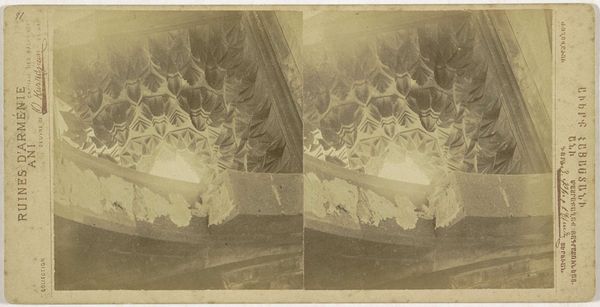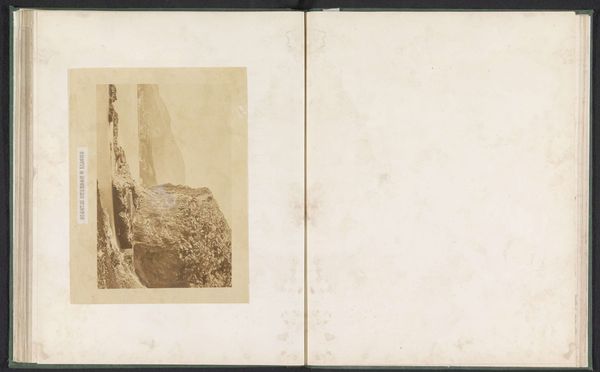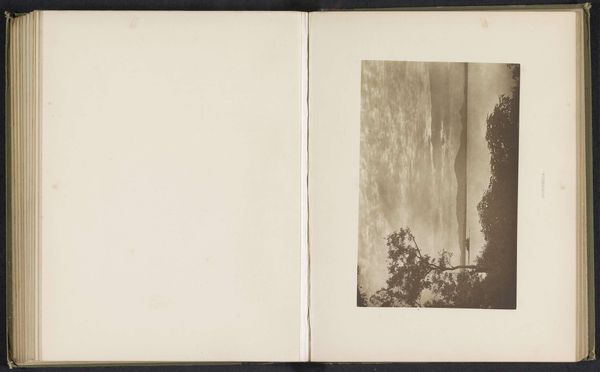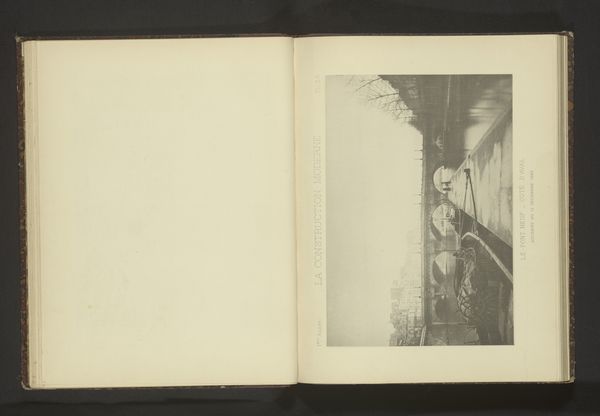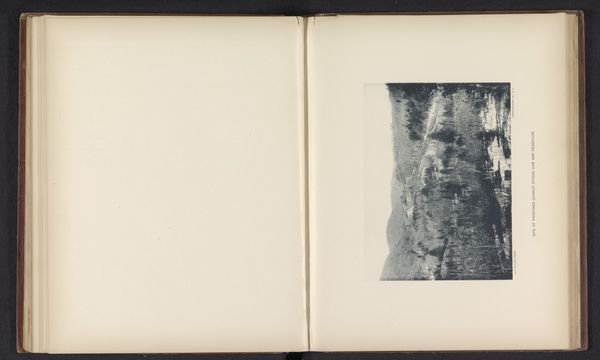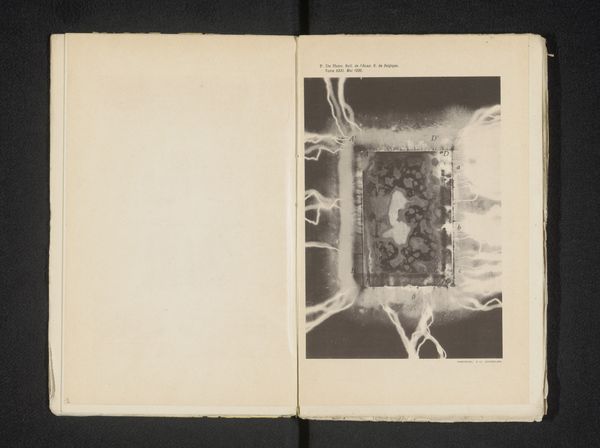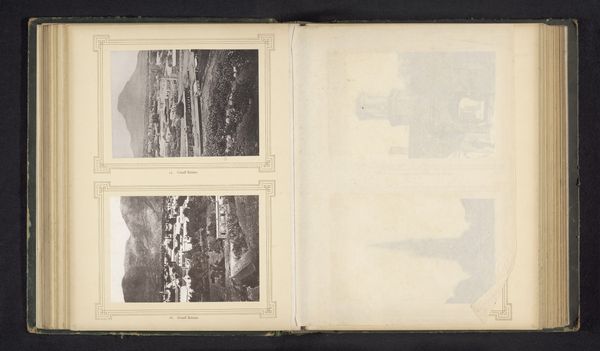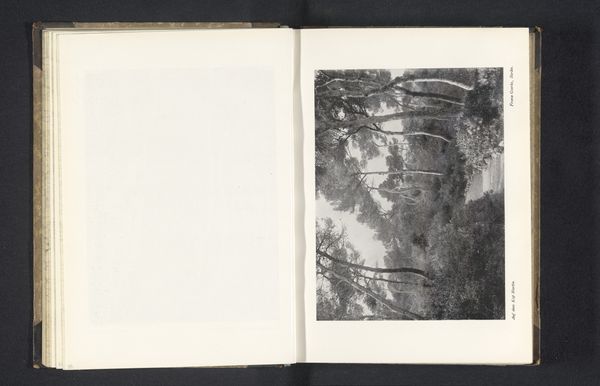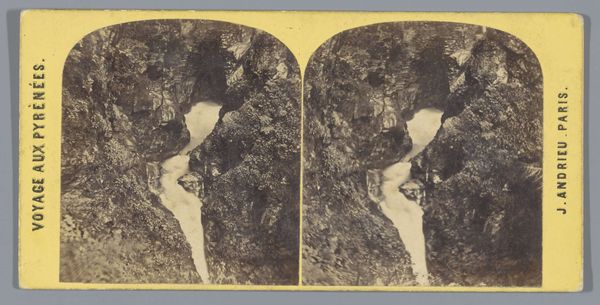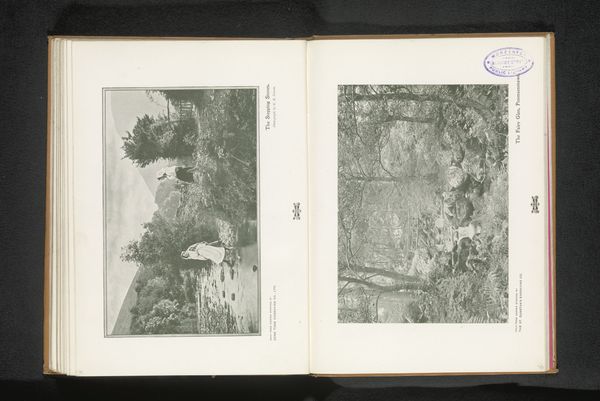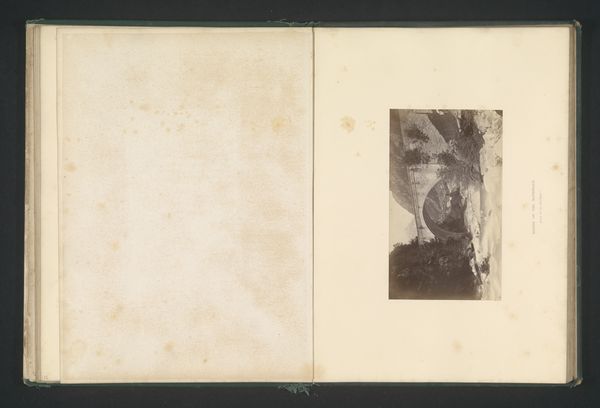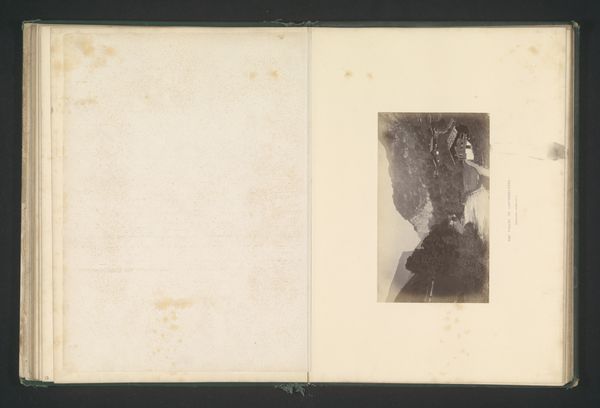
Dimensions: height 87 mm, width 176 mm
Copyright: Rijks Museum: Open Domain
Curator: Looking at this stereoscopic gelatin silver print from sometime between 1867 and 1891, titled “Ice Formation in 'Catlin's Cave' near Niagara Falls,” immediately evokes a feeling of stillness and raw, untouched power. What’s your first impression? Editor: My immediate impression is of overwhelming verticality. The artist, Charles Bierstadt, captured these magnificent icicles—essentially frozen waterfalls—creating a striking upward thrust. The sepia tones only amplify the scene’s imposing gravity and quiet drama. Curator: The location itself, Catlin's Cave, lends this image extra symbolic weight. John Catlin's exhibitions often focused on the cultures and appearances of indigenous people of the Americas. By naming the cave in his honor, is Bierstadt potentially placing the frozen natural wonder in relationship to a problematic colonial narrative? Editor: That's a really interesting intersection to consider. From my perspective, focusing on purely formal terms, I find the composition cleverly designed, contrasting the solid rock face with the ephemeral, crystalline structure of the ice. The play of light and shadow adds depth to an otherwise monochrome palette. Semiotically, it evokes ideas of permanence and impermanence, strength and fragility. Curator: Definitely. Thinking about Romanticism's artistic vision, which prioritized emotional intensity and sublime awe in natural settings, how might this resonate today, in our era of increasing ecological anxiety, wherein landscape has been altered irrevocably? Do views like these remind viewers what may be lost? Editor: Possibly. In this particular landscape shot, what stands out is the sheer materiality – the textures of rock and ice that photography alone could convincingly capture at the time. You feel you could almost reach out and touch the cold, rough surfaces. Photography was an amazing way of capturing these scenes; of course, what seems pristine and uninhabited may not reflect its full reality. Curator: Agreed. So much of what landscape art signifies hinges on a nexus of societal perceptions—colonial, environmental, historical—complicating the "straightforward" scene that photography seemingly presents. Editor: Yes. Considering photography’s rise alongside mass media, there are endless threads here for future scholars to unpick. I've definitely found my eye drawn toward previously unseen details.
Comments
No comments
Be the first to comment and join the conversation on the ultimate creative platform.
